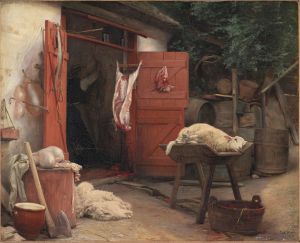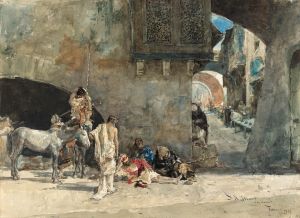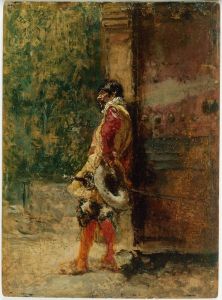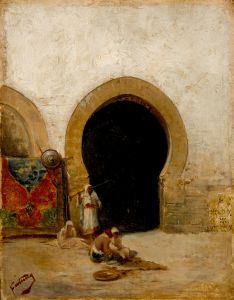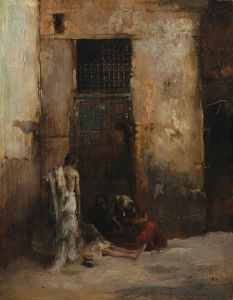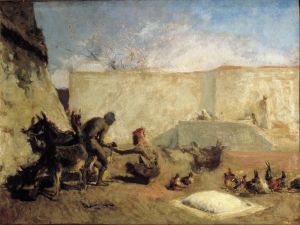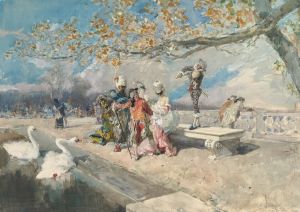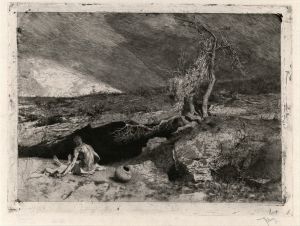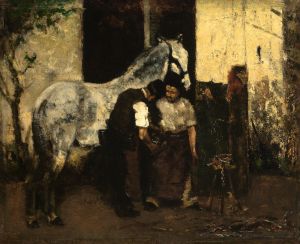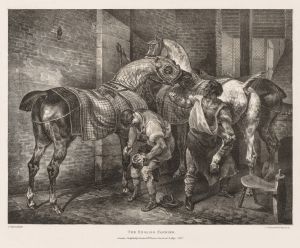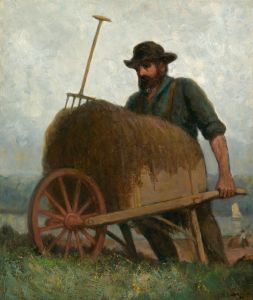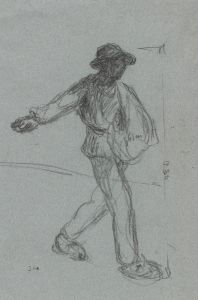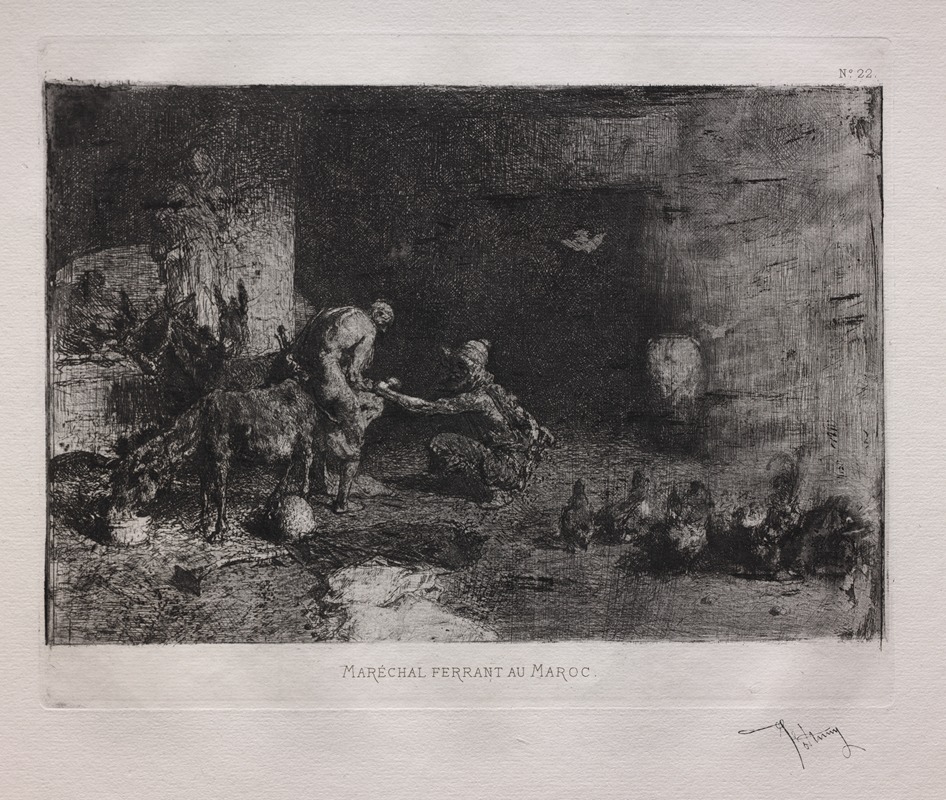
Shoeing a Mule in Morocco
A hand-painted replica of Mariano Fortuny Marsal’s masterpiece Shoeing a Mule in Morocco, meticulously crafted by professional artists to capture the true essence of the original. Each piece is created with museum-quality canvas and rare mineral pigments, carefully painted by experienced artists with delicate brushstrokes and rich, layered colors to perfectly recreate the texture of the original artwork. Unlike machine-printed reproductions, this hand-painted version brings the painting to life, infused with the artist’s emotions and skill in every stroke. Whether for personal collection or home decoration, it instantly elevates the artistic atmosphere of any space.
"Shoeing a Mule in Morocco" is a painting by the Spanish artist Mariano Fortuny Marsal, also known as Marià Fortuny i Marsal. Fortuny was a prominent 19th-century painter, renowned for his detailed and vibrant works that often depicted exotic and historical themes. Born in Reus, Catalonia, in 1838, Fortuny became one of the most celebrated artists of his time, known for his technical skill and his ability to capture light and color.
The painting "Shoeing a Mule in Morocco" is a testament to Fortuny's fascination with Orientalism, a trend in 19th-century European art that depicted the Middle East, North Africa, and Asia as exotic and romanticized locales. This interest was partly fueled by Fortuny's travels to Morocco in 1860, where he was sent to document the Spanish-Moroccan War. The experience left a profound impact on him, influencing much of his later work.
In "Shoeing a Mule in Morocco," Fortuny captures a scene that is both everyday and culturally specific. The painting depicts a group of figures engaged in the task of shoeing a mule, a common and necessary activity in regions where mules were essential for transportation and labor. The setting is distinctly Moroccan, with the architecture and attire of the figures reflecting the local culture. Fortuny's attention to detail is evident in the intricate rendering of the figures' clothing and the textures of the surrounding environment.
The composition of the painting is dynamic, with the figures arranged in a way that guides the viewer's eye through the scene. Fortuny's use of light and shadow adds depth and realism, highlighting his mastery of capturing the nuances of natural light. The colors are rich and varied, with a palette that reflects the warmth and vibrancy of the Moroccan landscape.
Fortuny's work, including "Shoeing a Mule in Morocco," is often celebrated for its technical brilliance and its ability to convey a sense of place and atmosphere. His paintings are characterized by their meticulous detail and their ability to capture the essence of the scenes he depicted. Fortuny's interest in Orientalism and his travels to North Africa provided him with a wealth of material that he skillfully translated into his art.
"Shoeing a Mule in Morocco" is a fine example of Fortuny's ability to blend realism with a sense of the exotic, creating a work that is both a document of a specific time and place and a testament to his artistic vision. The painting reflects the broader 19th-century European fascination with the "Orient" and the ways in which artists like Fortuny sought to capture and interpret these distant cultures.
Fortuny's legacy as an artist is significant, and his works continue to be studied and admired for their technical prowess and their contribution to the Orientalist genre. "Shoeing a Mule in Morocco" stands as a notable piece within his oeuvre, exemplifying his skill and his engagement with the themes that defined much of his career.





